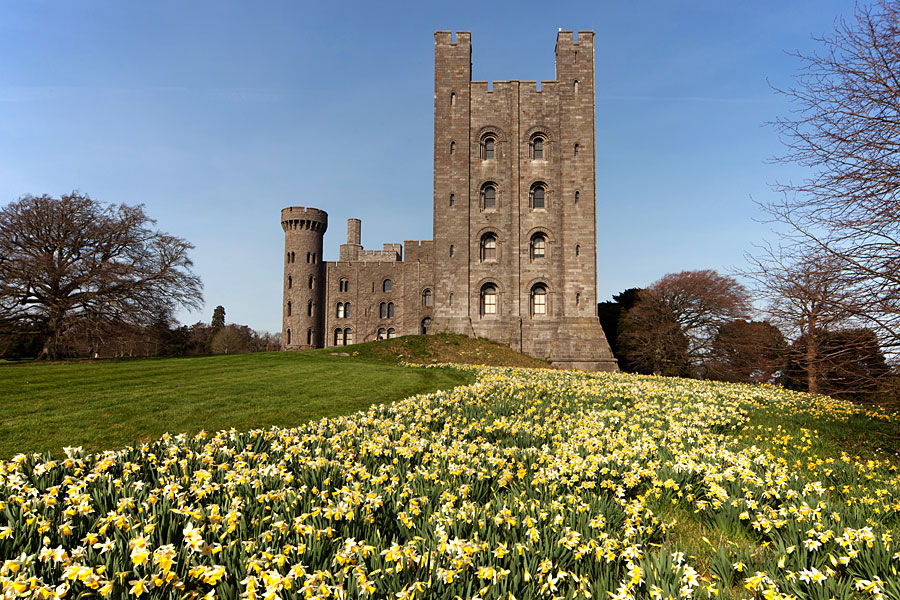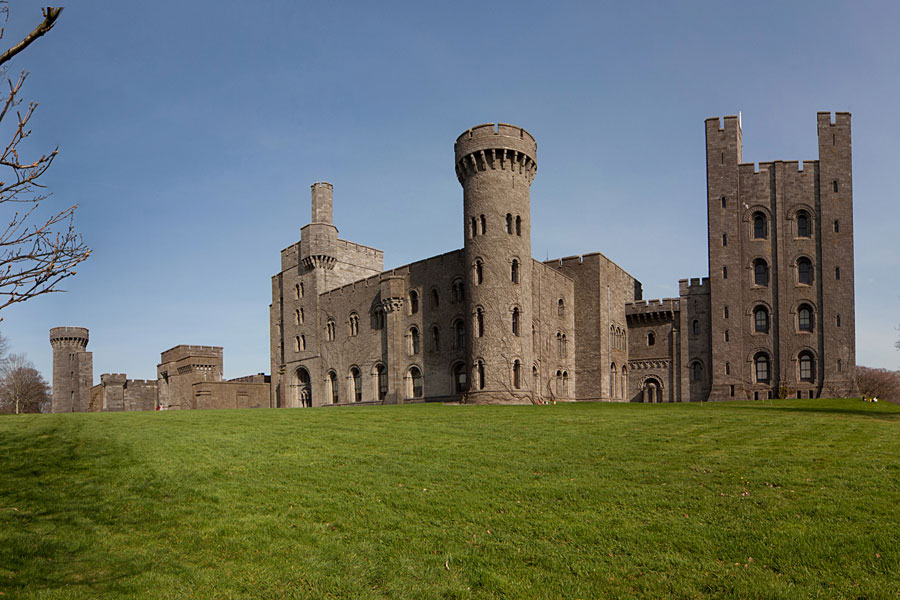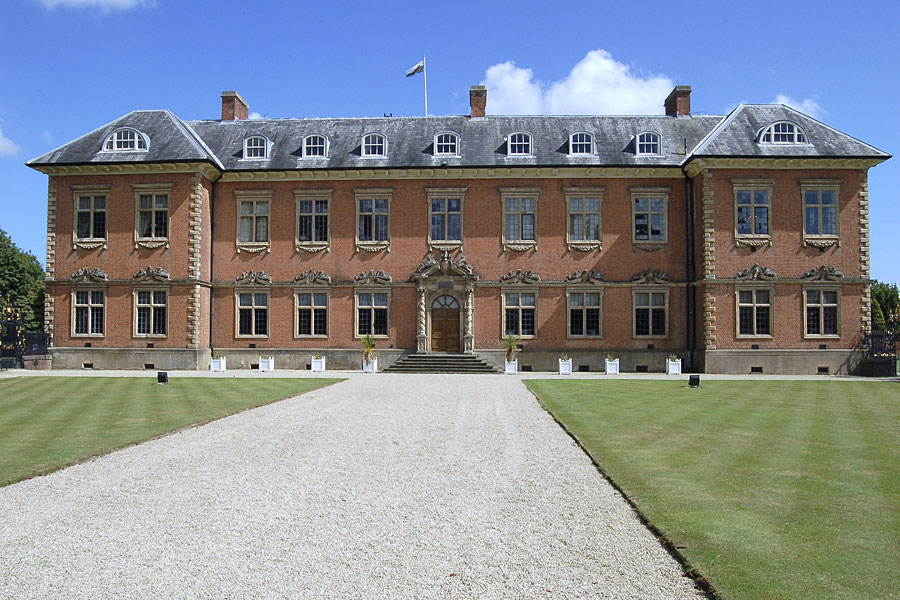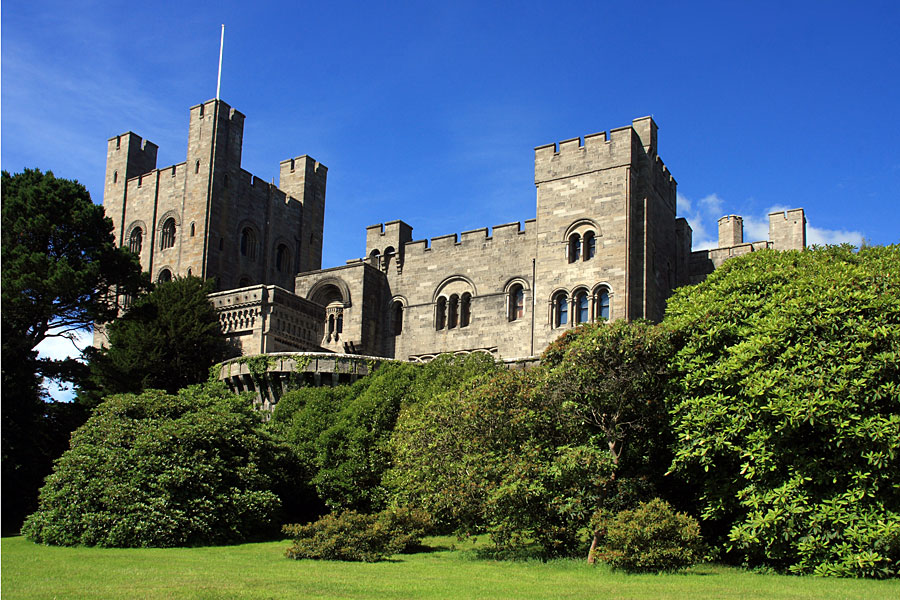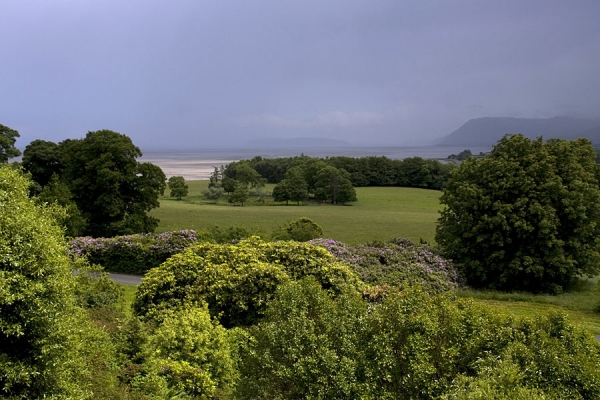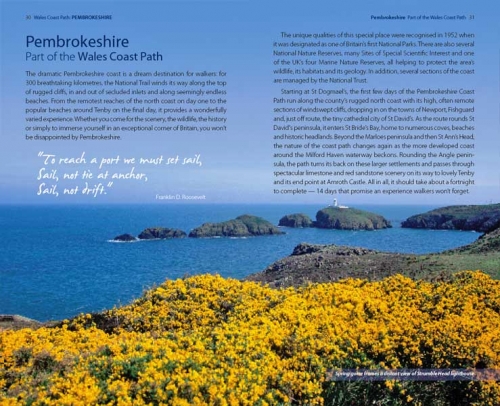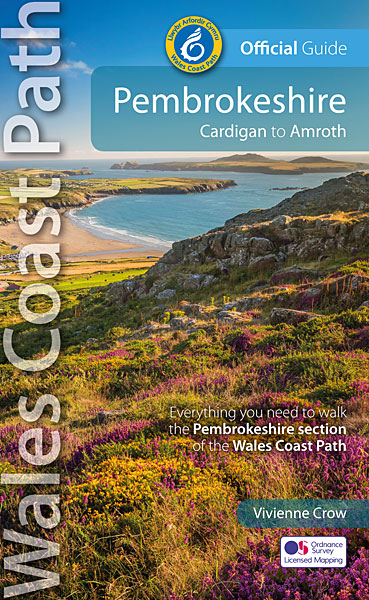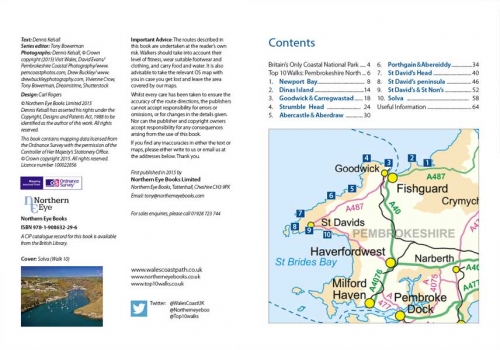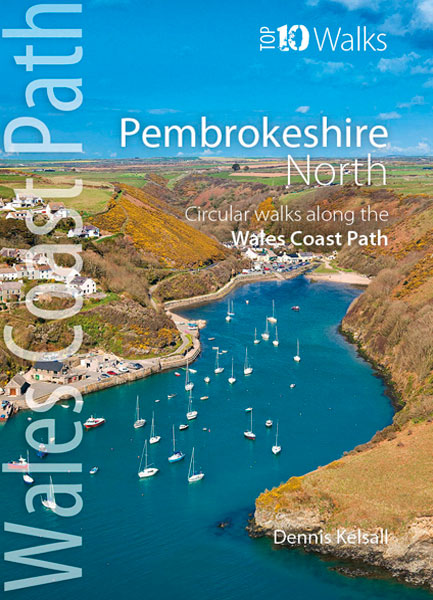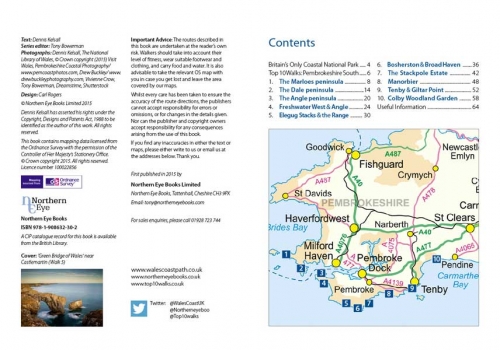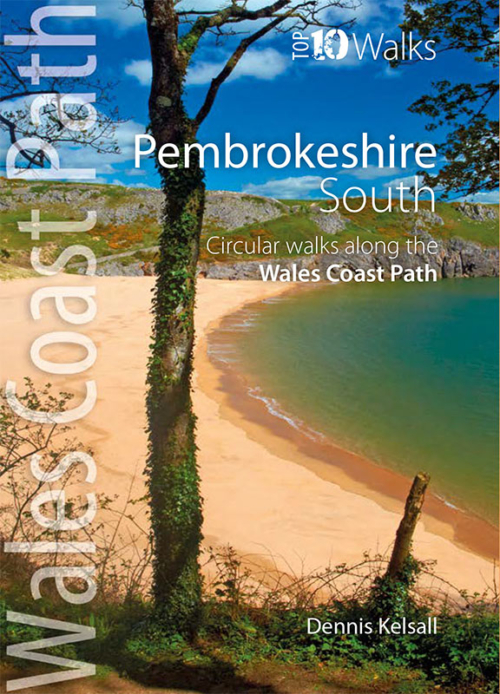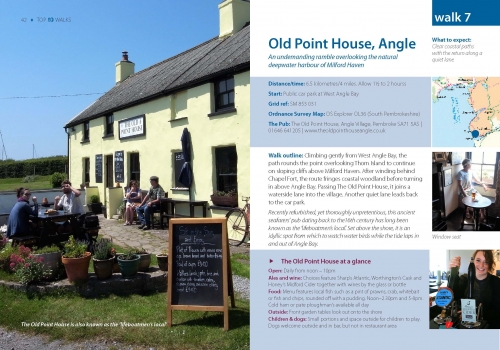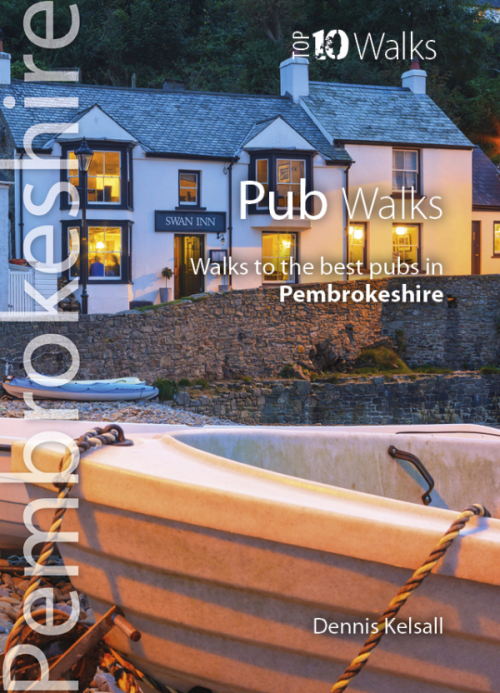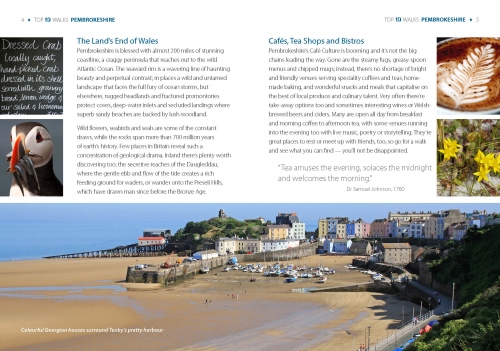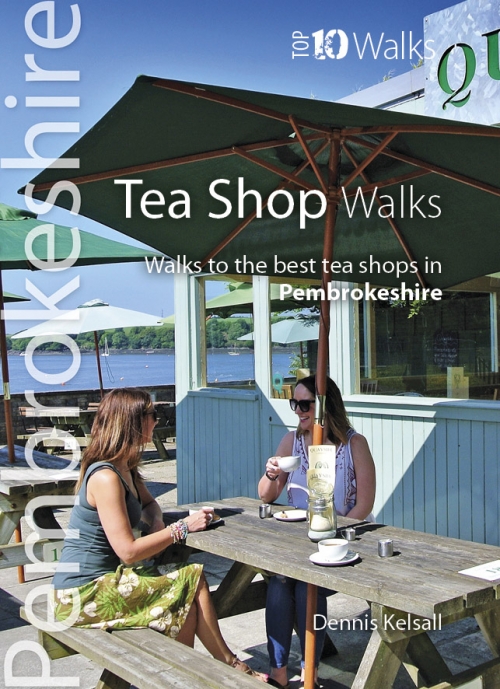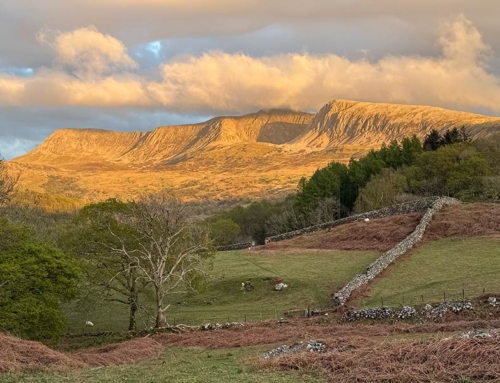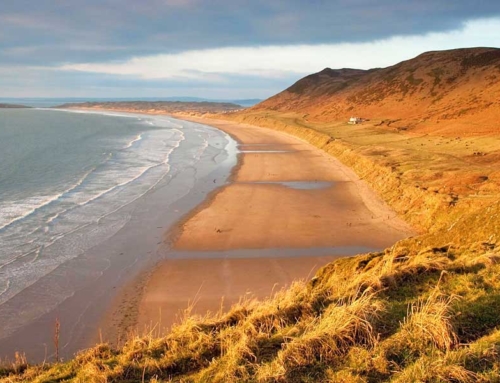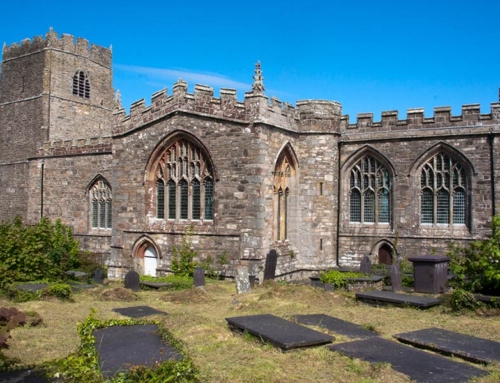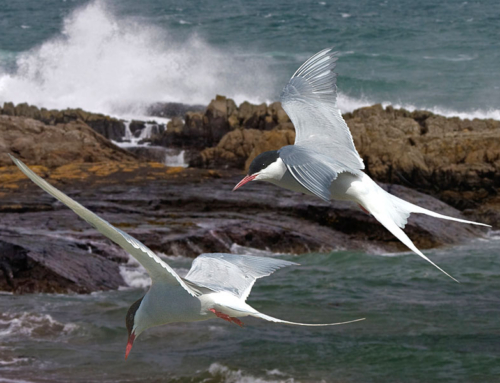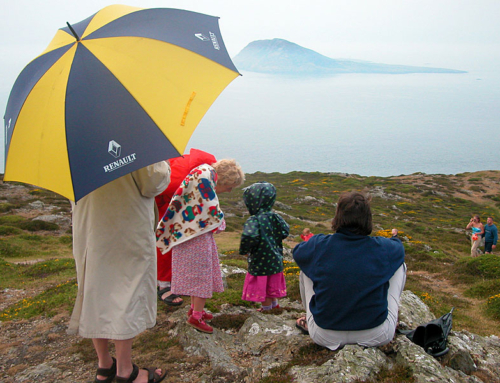Penrhyn Castle sits on the Menai shore, close to the Wales Coast Path
The Welsh coastline and surrounding countryside is home to some of the finest country houses in Britain. Join Sioned Bannister as she explores three stunning National Trust properties close to the coast
“WITH NEARLY 20% OF THE WESH COAST cared for by the National Trust, it’s the amazing diversity that amazes me,” says Richard Neale, Welsh Coastal Life’s very own National Trust columnist and coastal custodian. “If it’s wet outside, you can while away a few fascinating hours at one of our historic houses and when the sun comes out, you can take a picnic or a walk on one of our beaches or coastal viewpoints.”
Coastal properties
Richard’s work for the National Trust as a Coastal Engagement Project Management in Wales means he’s also pretty excited about National Trust properties along the coast too
“For me,” explains Richard, “it’s that combination of beautiful views, wildlife and living history – all in one place that makes National Trust properties so special. As well as the big houses and famous beaches, I like to seek out the lesser-known coastal nooks and crannies cared for by the Trust, like some of the hidden coves of Llyn or Pembrokeshire. They nestle down leafy lanes and are tucked into the coastline and are often free from crowds”.
The National Trust has been safeguarding some of the nation’s finest properties, stretches of coastline, woodlands and nature reserves since 1895, when it was set up to preserve and protect “places of historic interest or natural beauty”. The trust owns 200 houses and properties that are open to the public, along with almost 1,000 square miles of coast and countryside.
The National Trust owns 200 houses and properties that are open to the public, along with almost 1,000 square miles of coast and countryside.
The Pennants of Penrhyn
The dominating grey walls of Penrhyn Castle occupy one of the finest positions on the North Wales coastline. It overlooks the turbulent Menai Straits to the north, and the majestic mountains of Snowdonia to the south, and the stunning sea views stretch far and wide to Anglesey and along the coast.
But, all is not as it seems at Penrhyn. Although it has all the grandeur and convincing looks of an ancient castle on a grand scale, it is actually a mock Norman castle, built in the mid nineteenth century by architect Thomas Hopper. There has been a manor house on the site since the 1400s and a tower was added in the late eighteenth century.
When the Pennant family asked Hopper to redesign and redevelop it, he changed it almost beyond recognition. Today, it is one of the most famous fantasy castles in Britain. The Pennant family fortunes came from the lucrative Welsh slate mines that they owned nearby (at one time the largest slate quarry in the world), as well as the sweet sugar plants in the Caribbean. The Pennant family owned one of the largest sugar plantations in Jamaica, which grew by marriage and fortuitous business during the nineteenth century.
However, by the middle of the 1900s, the Pennant family fortunes were all but obliterated. The 4th Lord Penrhyn, Hugh Napier Douglas-Pennant died in 1949, leaving the Penrhyn estate to his niece, but she died two years later and the property and land was passed to the government in lieu of death taxes.
Today, the castle is popular with visitors who come to explore the beautiful gardens and 60 acres of grounds, the stunning castle interiors (including the enormous slate bed built for Queen Victoria) and the attractions like the dolls museum, model railway museum and the extensive art collection.
The Lords of Llanerchaeron
What makes the mansion house and farm at Llanerchaeron unique is it’s rarity in this part of Wales. Designed in 1795 by John Nash, who was better known for his work in London where he was responsible for the beautiful Georgian villas of Regent Street, Park Square and Marylebone as well as Buckingham Palace.
Llanerchaeron was built as a model farm complex in the Welsh countryside, and is largely unchanged from Nash’s design. The working areas of the estate are incredibly well preserved, and so the service rooms like the brew-house, the dairy, the smoker and the walled gardens remain almost as they would have done over 200 years ago.
The Lewis family were Welsh gentry who lived in the estate until it was left to the National Trust in 1989. Today, the estate is run as a working organic farm, with Welsh Black cows, rare pigs and Llanwenog sheep, and the produce grown in the old walled kitchen gardens is available to buy from the shop. The house is also open to the public, as are the tranquil grounds.
Totally Tredegar
Our final foray into coastal National Trust properties takes us to the South Wales county of Newport and the grand Tredegar House, one of Wales’ most famous country piles and a fine example of a restoration house.
For over 500 years, Tredegar House was home to the Morgans; an influential and wealthy family who owned many thousands of acres of land in South Wales. In the mid nineteenth century, the Morgan family are credited with establishing the then small harbour of Newport and turning it into one of the largest docks in Wales.
Today the house and grounds are open to the public throughout the year. Explore the sumptuous interior of the grand house and as well as some of the larger than life personalities who lived there. The grounds and parkland are the perfect spot for autumn walks, and with 90 acres of them, you’re unlikely to run out of room!
So why not explore one of the Welsh coast’s historic country houses, and let your imagination take you back through centuries of heritage to discover a different era and a long-lost way of life.
“And,” says Richard, “don’t forget to look out for one of our events – on our website or, if you’re a member, in our Wales newsletters. It’s a great chance to meet local staff who are only too happy to share the wealth of knowledge and experience that comes with looking after special places.”
This article first appeared in Welsh Coastal Life magazine in the June issue 2013, and is re-published here with the author’s permission. Copyright © Sioned Bannister 2013. All rights reserved.
Sioned Bannister is a freelance outdoor writer, with a particular love for Wales and the Welsh coast. She has been a regular contributor to UK and Welsh magazines for many years. She is also a member of the Outdoor Writers and Photographers Guild and available for commissions.
Contact: sionedee@hotmail.com


